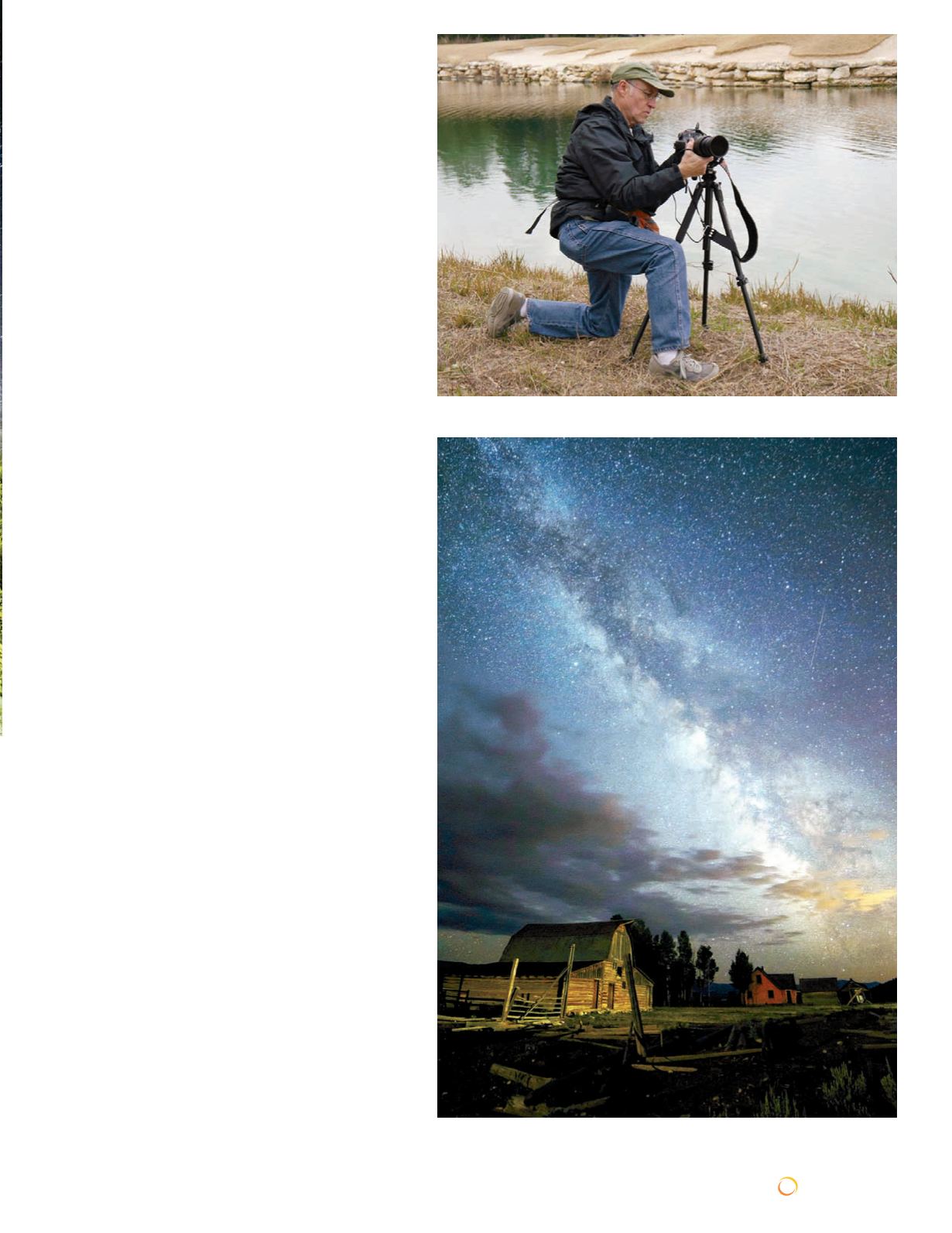
MARCH 201 5 SUNRAYS | 79
ONLINE:
SCTEXAS.ORG
PHOTO BY CHERYL COOK
But even then, you’re constantly discovering new
things – it’s a lifetime of learning, but that’s one of
the things I love about it.”
Last July, Doug learned of a workshop that would al-
lowhim to combine his interest in astronomywith his
photography practice, and jumped at the opportunity.
Bracing himself for several long, sleepless nights, he
gatheredhis gear and trekked out to theGrandTetons
National Park, lens aimed towards the sky.
Darkness is essential for nighttime photography, and
out in the Wyoming wilderness, Doug found plenty of
it. “When you’re trying to capture starlight, patience is
essential,” he says. “Patience – and planning.” When
attempting to capture the core of the Milky Way (the
galaxy’s brightest portion), Doug had only a brief
window of time before the rotation of the Earthwould
ruin his optimal shot. Weather, moonlight, even the
time of year – these too can all have an impact on
what can be seen in the night sky.
Of course, the darkness can work against you, too.
Doug’s images typically require a minimum expo-
sure time of thirty seconds to capture the starlight.
Sometimes, depending onwhat is being photographed,
exposures can evenbe hours long, capturing the subtle
movement of the horizon as it drifts overhead. Such
long exposures make his camera extremely sensitive
to light – even too much moonlight could blow out an
entire photograph. “It helps to be away from people,”
says Doug, who once had a shot unexpectedly illumi-
nated by the headlights of a passing car. Laughing,
he adds, “It’s not always that easy.”
Back in Central Texas, the glittering intensity of the
Milky Way disappears behind the glow of civiliza-
tion. For Doug, however, the vast wonders of space
are never too far away. Advances in technology have
obscured the night sky our ancestors once knew, but it
is also through technology that we are able to capture,
observe, and understand our universe better thanwe
ever have before. Now free to observe the night sky as
he never could during his working years, Doug says
he relishes the freedom to indulge in his passions
and the ability to share his discoveries with others.
Doug recalls an evening when his granddaughter
joined him with his telescope. As she gazed through
the scope, he directed her toward a particular point
in the sky. Doug smiles as he tells the story. “I said,
‘See that cluster of stars? That’s twenty million light
years away.’” Laughing, he asks, “Can you imagine
something being that far away? Twenty million. For
us to be able to see something like that, even for amo-
ment, is unimaginable. But it’s there, and tomorrow
it will be there again, and that’s amazing.”
If youdon’t have a telescope, you can view the universe
through Doug’s eyes at the Round Rock Area Arts
Council’s seventh annual Imagine event, where three
of his photographs will be on display through spring.
T.A. Moulton barns illuminated by moonlight, Grand Teton National
Park, Wyoming.
Right: Photographer Doug Farrell


